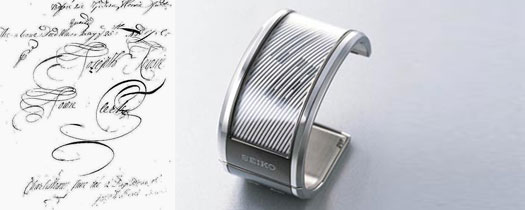
Lidl is a European discount supermarket chain of German origin, which has already become established in 17 countries. It specialises in foodstuffs, drinks, cleaning articles and other household items, but no pieces of jewellery as yet. They have limited offers – normally for two or three days – on more expensive items such as electrical appliances, computers or tools, but no pieces of jewellery as yet. Lidl also sells own label products, but it hasn’t dared to sell any pieces of jewellery as yet. According to well-informed sources, the supermarket does all this so as to be able to offer the lowest prices possible, its main objective. Independent studies by consumer organisations have not detected pieces of jewellery amongst Lidl ranges, an item which could very well be offered at a much lower price than other brands. Giving people what they want is not a strategy. To a certain extent, it is a mission and not necessarily one with economic productivity as its only objective.
What is a jewel?
It’s an authentic piece which transmits a sense of well-being to the person who is wearing it and, above all, it engages them in communication.
What do you believe will be the jewel of the future?
It will most probably be a piece which contains information technology, something related to the potential of internet which enables people to communicate with one another. The piece of the future is one which engages the user, activates them and urges them to communicate with others. It’s a PIN which opens doors.
How would you define the current situation with regard to jewellery in Catalonia? Why has it come to such a situation?
The second question already gives away the fact that a gloomy answer is expected to the first one. Well, regardless of this to some extent, and very much as a result of it, I’m glad I’ve been asked this question. In the present situation outdated models have become exhausted. Thinking of a piece of jewellery as a unique piece and as something based on precious materials and on originality due to craftsmanship has no future in society.The future lies in communicating, making things social, sharing.
We have come to such a situation due to a certain persistence in insisting on a traditional characteristic of ornamentation – its uniqueness. It’s a restrictive idea, obsolete, something which belongs in a museum.
Do you think the sector is modernising itself?
No. It revolves around outdated criteria and efforts to modernise – which are, in fact, many – are focussed on approaches to management and not on putting forward a much-needed, new idea of jewellery.
Which path must jewellery take into the future?
First of all, calling itself ornamentation rather than jewellery as doing so will open up the field and prevent it from being restricted to an exclusive circle of people. The future of jewellery lies in creating pieces which are more like tools for making contact with other people and not like a beacon which announces the presence of a self-complacent ego. It lies more in pieces which multiply and bring about communication. A piece you buy in one place will also be accessible in another place or for other people, and will incorporate a way to establish contact. It’s here where information technologies should be used. An iPod or a mobile are pieces containing identity and communication. Such trends should be taken up by the world of traditional jewellery-ornamentation. But it’s not a case of embedding a diamond into an MP3 player, rather the piece which serves as an ornamentation for an individual should be a means of communication. It is shared with others, maybe many others.
What is your contribution to the sector?
Up to now ornamentation was a way to display social status. Jewels indicated the class to which the person wearing the piece belonged. DuchClaramunt has been saying for years that ornamentation is more related to the feelings inside a person and that the user’s interaction with the piece should be an unavoidable option. Ornamentation is a way in which people can feel good. We could say that the thing which is related to people’s well-being today is a mixture between technology and sharing. In short, ornamentation is communication. DuchClaramunt is preparing a piece of ornamentation which will be on sale at newsstands. It is designed to reach the largest number of people in the greatest number of places possible without restricting it to one country. It’s a bracelet which is activated once it has been purchased, thus opening up the possibility of communicating with its twin piece which will have been purchased by somebody else in another place, which may be faraway. The piece offers an identity, but it also signifies belonging to a group and the chance to communicate with other members in the group. The concept of a jewel being something unique should be turned on its head and ornamentation should convert such a concept into a sign of identity which brings people together, leading them to a place where many people feel good and feel good together in a community. The newsstand bracelet is a tool for sociability.
